
Here we have a circle which is a combination of cos(t) and sin(t).
If a=b, then the graph will always be a circle.
Assignment 10
Jonathan Beal
Wow, Look at the Curves on That One!
In this investigation, I am going to be looking at parametric equations and what they create when the respective components are trigonometry functions. For example, x = cos(at) and y = sin(bt), where t is thought of as the amount of time. So t will actually affect the range that will be provided to graph and view the differences in the function. I am going to manipulate a and b, though, to move and shift the function around the axis and make the graph look really cool.
Let me begin with identifying and graphing the functions.
 |
Here we have a circle which is a combination of cos(t) and sin(t). If a=b, then the graph will always be a circle. |
Now I am going to use some values for a and b and explore the possibilities of distorting this innocent circle.
Here are some examples of changing the values within the function.
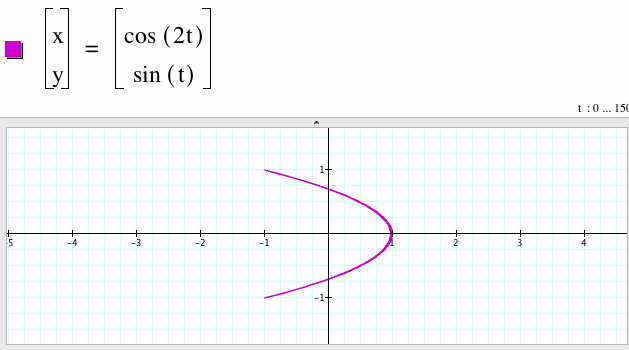 |
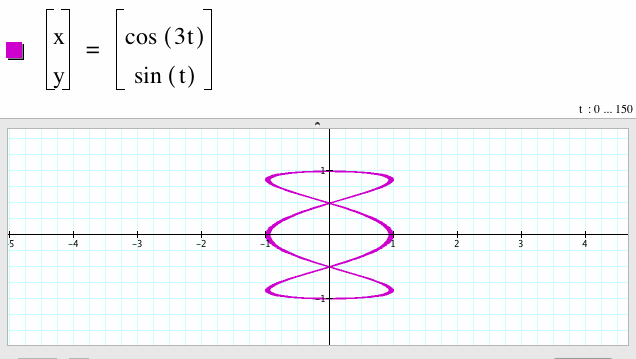 |
In the first graph, A=2 and in the second, A=3. This graph starts to intertwine on iteself over and over again. Below is a link to a movie that illustrates the different stages as the value of A increases. |
Watch here as A=N and creates a web of patterns that boggles the eyeball from the above parametric equations.
Now I am going to change the value of B in the parametric equation sin(bt)=y. The same kind of intertwined-ness that happened when A=n will occur as B gets larger and larger.
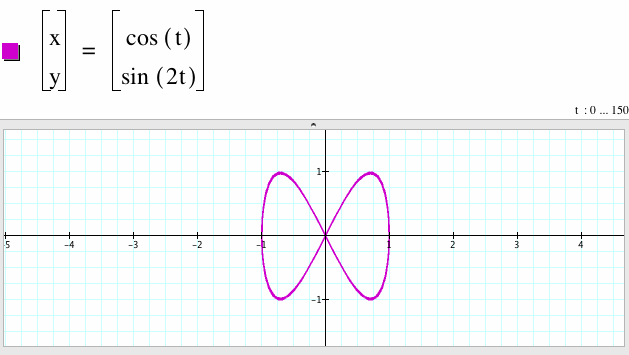 |
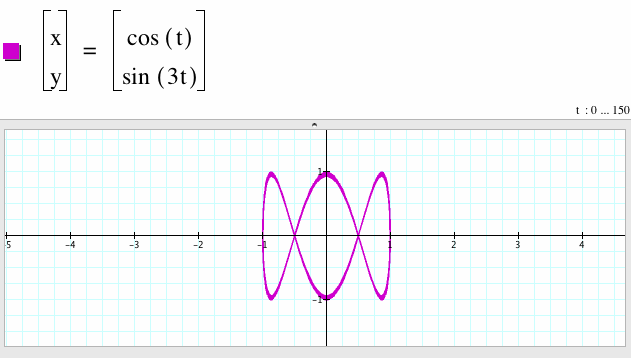 |
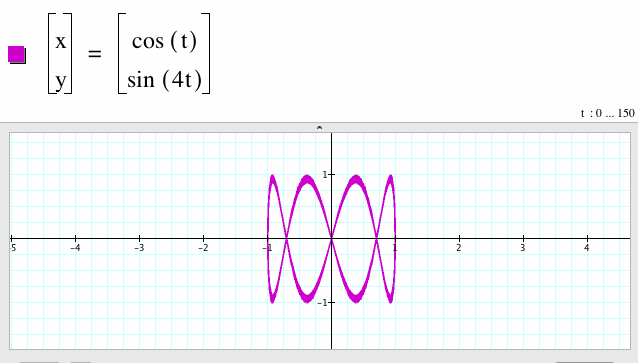 |
In the above equations, I made A larger so that we could see some depth in the cosine function. This made the graph extend vertically and then loop unto itself over and over. When we explore with the sine function, the graph grows from the circle outward horizontally and loops onto itself. But as B=n, it causes the parametric equations to make other crazy patterns and designs. |
What if we added a term to each equation? What if x=cos(t) + sin(nt) and y=sin(t)+cos(nt)? What kind of beautiful patterns would we make? Let's look at 2 movies and see what happens.
Madness.